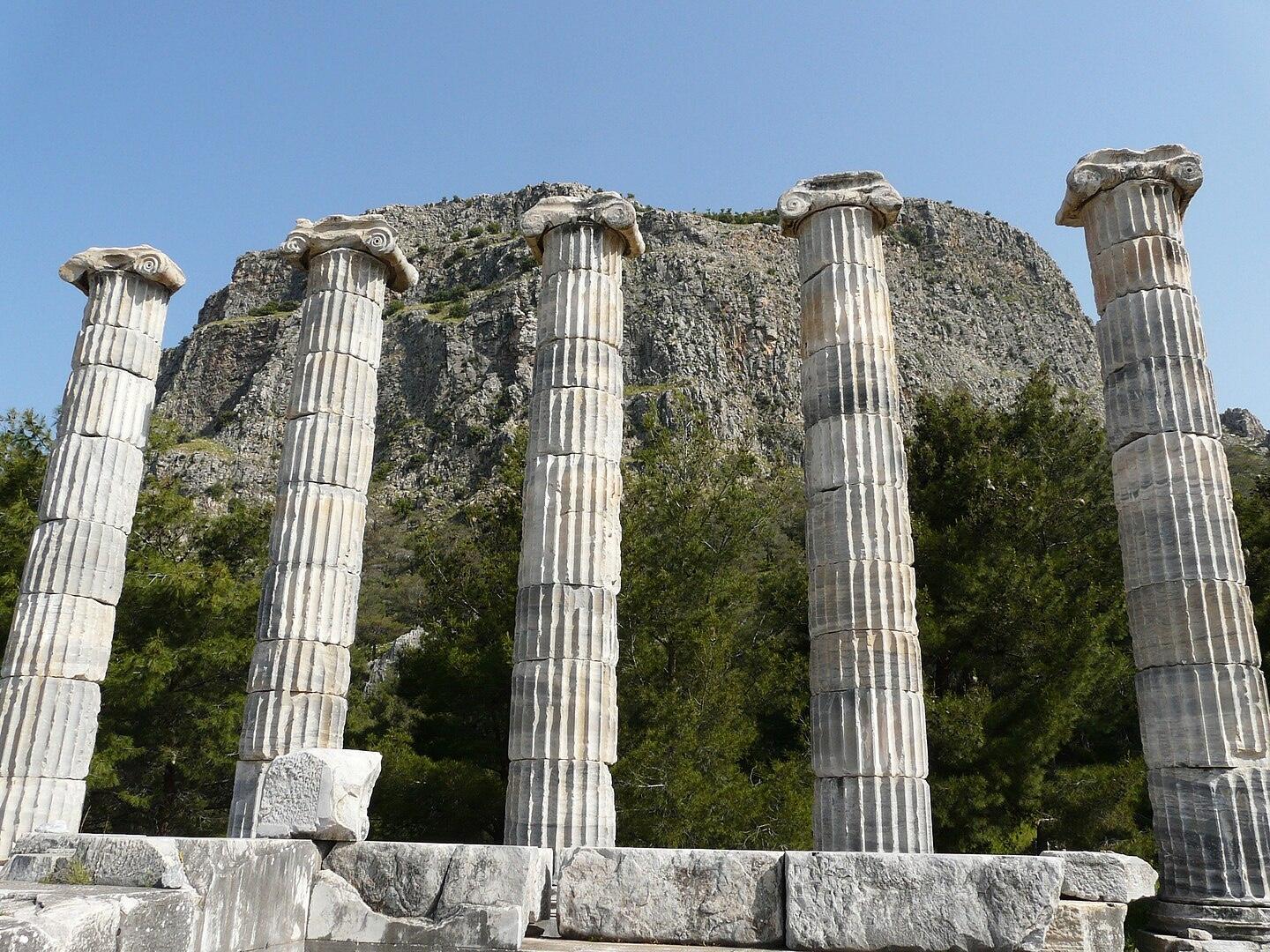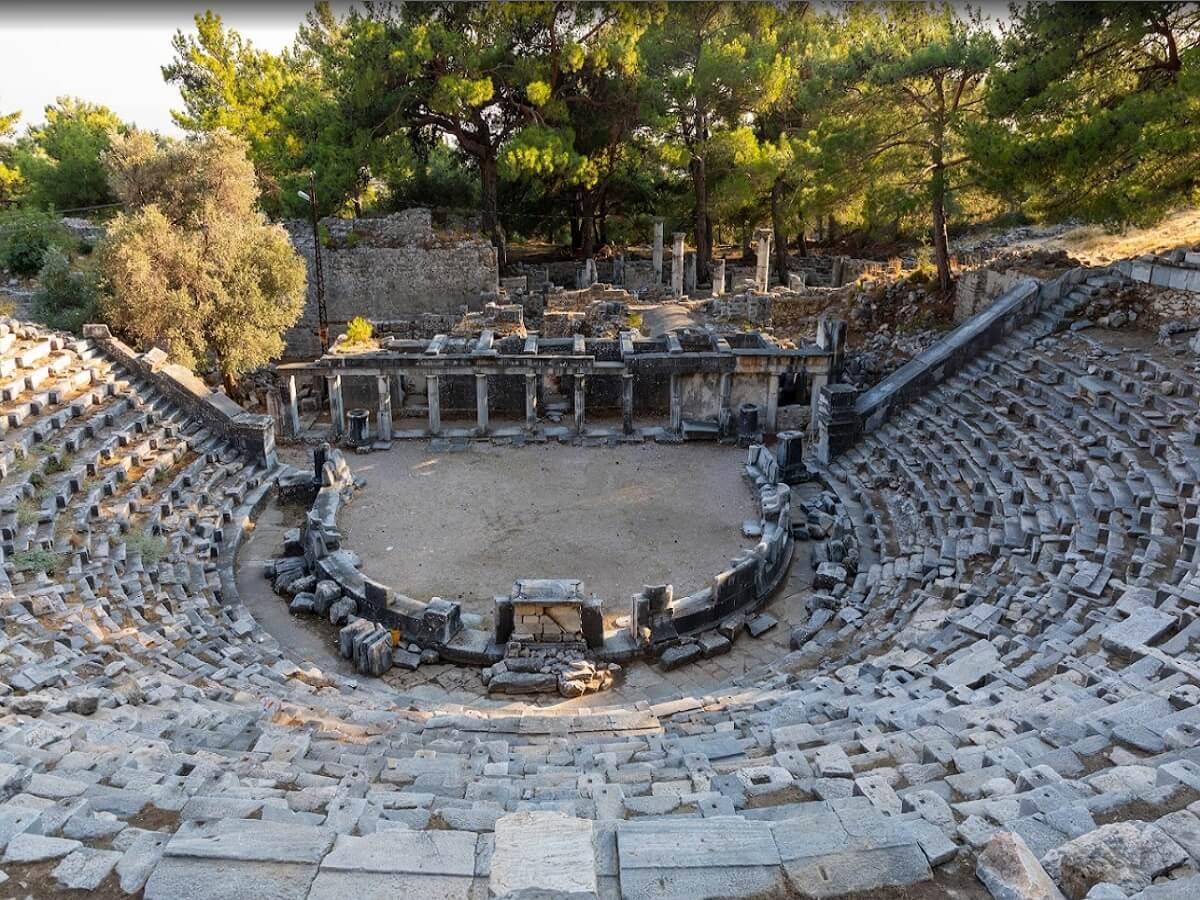Priene
A great Example of Ancient Urban Planning
Priene stands as one of the best-preserved examples of ancient Greek city planning, with its grid layout designed by Hippodamus. Known for its magnificent Temple of Athena and its role in the Ionian League, it was an important cultural center in the Hellenistic era

1.History
Priene was an important ancient Greek city located in Ionia, approximately 6 kilometers north of the Maeander River (now called the Büyük Menderes). Positioned about 25 kilometers from ancient Miletus, Priene originally stood on the coast, overlooking the Latmian Gulf of the Aegean Sea. The city was built on steep slopes and terraces, extending from sea level to a height of 380 meters. It is particularly renowned for its Hellenistic art and architecture, as well as its well-preserved urban layout, which provides valuable insight into ancient Greek town planning.
Priene was founded around 1000 BCE by colonists from Thebes, and by the 8th century BCE, it had become a member of the Ionian League, an alliance of Greek city-states. While the city never held significant political power due to its relatively small population of around 4,000 to 5,000 people, it was known for its cultural and architectural achievements. Priene was arranged into districts, including political, cultural, commercial, and religious areas, making it a representative example of Greek city organization.
The city’s significance diminished over time, especially after it lost its connection to the sea due to the siltation of the Maeander River in the 1st century BCE. Despite this, Priene remained an important center for Hellenistic art and culture, as well as a symbol of Ionian prosperity. Over the centuries, the city fell under the control of various empires, including the Byzantines and the Seljuks, but it never regained its earlier importance. By the 13th century CE, it was known as “Sampson” and had largely declined.
Temple of Athena Polias
Today, the remains of Priene are well-preserved and offer a glimpse into the city’s past. Notable structures that still stand include the Temple of Athena Polias, one of the city’s most important landmarks, built in honor of the city’s patron goddess. The agora, theater, stoa, and gymnasium also remain, along with a stadium in the lower sections of the city. The grid-like layout of the city, divided by main streets, is still visible, along with private houses featuring courtyards and storerooms. Priene’s ruins continue to provide significant information about ancient urban design and Greek life.

2.How to get there
Priene is situated 35 kilometers from Söke in Aydın Province. It is best accessed by private car or organized tours, as there is no direct public transportation. From Söke, follow the Priene signs for about 15 minutes along a well-paved road. Alternatively, you can join day trips that cover Priene, Miletus, and Didyma in one route, starting from nearby cities like Kuşadası or Didim.
3.GALLERY




4.Explore Nearby Sites
You can also explore several nearby historical spots around Priene. These close-by attractions offer further insight into the rich history of the region and are easily accessible for visitors wanting to extend their journey:

